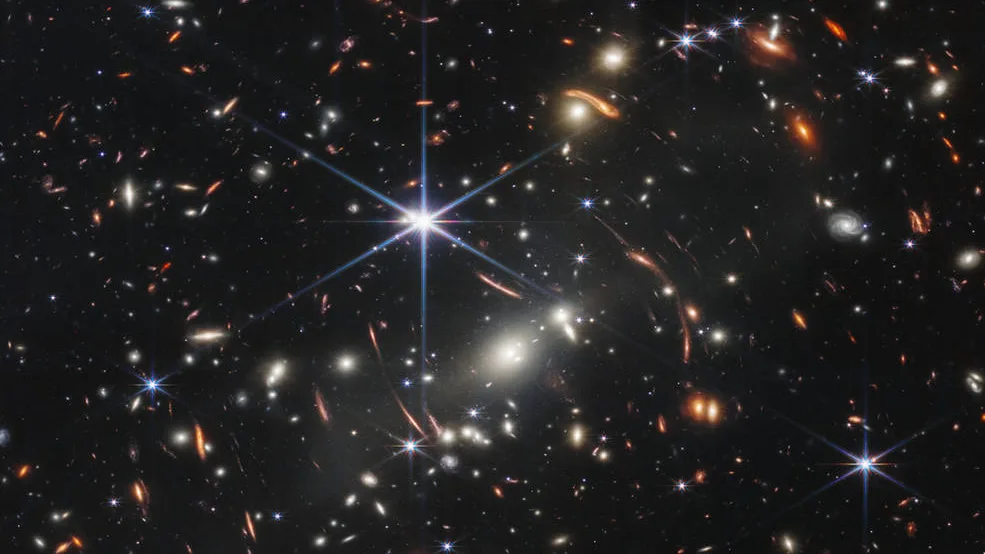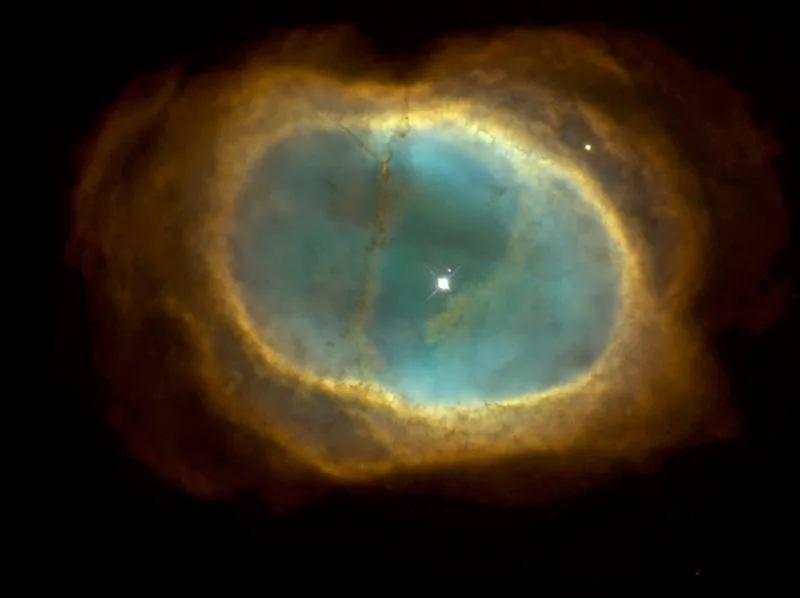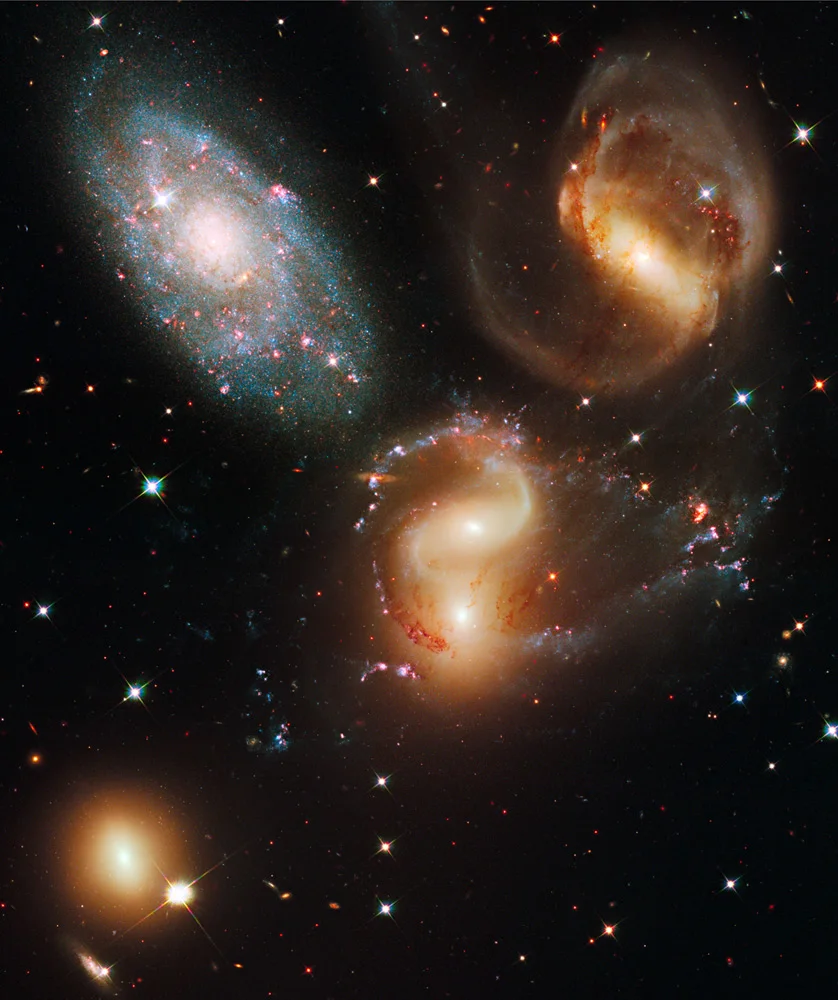
'Sneak peek' from Webb reveals deepest view of our universe ever seen
Astronomy and space enthusiasts are in for a special treat!
On Tuesday morning, we will finally see the much-anticipated first full-colour images from the James Webb Space Telescope. However, ahead of that momentous event, one of these pictures as been revealed to us earlier than expected!
Originally published Monday morning, this article has been updated following the White House event.
It's been nearly seven months since Webb launched into space. During that time, astronomers and space enthusiasts have been anxiously awaiting our first look at what this remarkable telescope can do.
The mission team has shared teasers during their efforts to deploy and calibrate Webb's mirrors and instruments, simply because they couldn't help but share the remarkable results.
Starting at 10:30 a.m. EDT on July 12, we will finally see the first series of "wow" images captured by the telescope during the final stages of its testing.
Because the anticipation is so great, NASA administrator Bill Nelson, along with U.S. President Joe Biden and Vice President Kamala Harris unveil one of the images — Webb's first "deep field" — at a special event at the White House on Monday evening.
A "deep field" image is one that looks as far out into the universe, and thus as far back in time, as a telescope possibly can. The Hubble Space Telescope produced two of these images looking at a postage-stamp-sized region of space with no stars. The Hubble Deep Field in 1996 was first, and the telescope spotted roughly 1,500 galaxies in that tiny section of 'empty' space. This was followed by the Hubble Ultra Deep Field in 2009, which expanded upon the Deep Field, revealing a total of around 10,000 galaxies!
Webb's Deep Field image looks at a region of space known as SMACS 0723, an immense galaxy supercluster with enough mass to warp the fabric of spacetime into a gigantic cosmic lens.
Using the Near-Infrared Camera (NIRCam), the James Webb Space Telescope has produced the deepest and sharpest infrared image of the distant universe to date — Webb's First Deep Field. Credits: NASA, ESA, CSA, and STScI
According to NASA: "Thousands of galaxies — including the faintest objects ever observed in the infrared — have appeared in Webb's view for the first time. This slice of the vast universe covers a patch of sky approximately the size of a grain of sand held at arm's length by someone on the ground."
"The image shows the galaxy cluster SMACS 0723 as it appeared 4.6 billion years ago," the space agency explained in a press release on Monday. "The combined mass of this galaxy cluster acts as a gravitational lens, magnifying much more distant galaxies behind it. Webb's NIRCam has brought those distant galaxies into sharp focus — they have tiny, faint structures that have never been seen before, including star clusters and diffuse features. Researchers will soon begin to learn more about the galaxies' masses, ages, histories, and compositions, as Webb seeks the earliest galaxies in the universe."
An older view of this region of space, from Hubble, can be seen at the bottom of this article.
As for the rest of the images, tune in to NASA TV starting at 9:45 a.m. EDT to see what else the Webb team has to show us!
WHAT ARE WE GOING TO SEE?
The Webb team chose five cosmic targets for this event. So here they are, along with some examples of previous observations using Webb's predecessor, Hubble.
The Carina Nebula
The Carina Nebula is an immense cloud of dust and gas, roughly 500 light years across. Located around 7,600 light years from Earth, it is a region of intense star formation and is already home to numerous massive stars.

These two images from the Hubble Space Telescope show Herbig Haro 901, aka the "Mystic Mountain", which is an immense 'pillar' of dust and gas in the Carina Nebula. The top image is Hubble's view of the pillar in the visible light. The bottom image captures what the telescope sees in the infrared. Credits: NASA, ESA, and the Hubble 20th Anniversary Team (STScI)
So far, our best looks at this nebula have been with the Hubble Space Telescope. The images above focus on just a tiny portion of it, about 8 light years wide, revealing the differences between Hubble's visible and infrared images. It is not known yet which part of the nebula JWST focused on. However, the new image should appear closer to the bottom frame (Hubble's IR image) but with much greater detail.
WASP-96 b
In a NASA press conference on June 30, it was announced that one of the images released would be the spectrum of an exoplanet. Observing an alien planet as it passes in front of its star allows a powerful telescope to pick out the chemical elements in the planet's atmosphere, thus revealing more about its nature.
Using Canada's Near-Infrared Imager and Slitless Spectrograph instrument (NIRISS), the team targetted a gas giant planet known as WASP-96 b. At roughly half the mass of Jupiter, this alien world is remarkable for two reasons. First, it's incredibly close to its star, taking less than 4 days to complete one orbit. Second, unlike the gas giants in our solar system, it does not appear to have any clouds.
What we will likely see from WASP-96 b is an image of the spectrum of light emitted by the planet, similar to the test image below. In addition, the results should include a detailed makeup of this unusual planet's atmosphere.

This test image is from the NIRISS instrument while pointing at a bright star. Each colour in the image corresponds to a specific infrared wavelength between 0.6 and 2.8 microns. The black lines seen on the spectra are the telltale signs of hydrogen atoms present in the star. NIRISS is a Canadian Space Agency (CSA) contribution to the Webb project that provides unique observational capabilities that complement its other onboard instruments. Credit: NASA, CSA, and NIRISS team/Loic Albert, University of Montreal
The Southern Ring Nebula
Roughly 2,000 light years from Earth, in the southern constellation Vela, the remains of a dead star have expanded outward to form a planetary nebula known as NGC 3132, the 'Eight-Burst Nebula', or the 'Southern Ring Nebula'.

This image, captured by NASA's Hubble Space Telescope, clearly shows two stars near the center of the Southern Ring nebula — a bright white one, and an adjacent, fainter companion to its upper right. The faint partner is the white dwarf star that produced the nebula, and the flood of ultraviolet radiation from its surface is what makes the surrounding gases glow. Credits: The Hubble Heritage Team (STScI/AURA/NASA)
Imaged by the Hubble Space Telescope in 1995, Webb will likely provide us with a very different look at this planetary nebula.
Stephan's Quintet
Discovered by French astronomer Édouard Stephan in 1877, these five galaxies comprise the first compact galaxy cluster ever found. Located around 290 million light years away in the Pegasus constellation, it features three galaxies in close proximity to another two that are currently merging. Studies of this grouping have predicted that four of these five will eventually merge to form one immense galaxy.

Stephan's Quintet, as imaged by the Hubble Space Telescope in 2009. The group members are, clockwise from the upper left, NGC 7320, NGC 7319, NGC 7318 (a and b, currently merging), and NGC 7317. Credits: NASA, ESA and the Hubble SM4 ERO Team
Galaxy cluster SMACS 0723
Of the five images, this was the "deep field" image revealed at the White House on Monday night.
SMACS 0723 is another galaxy cluster, but rather than just five members, it has so many galaxies that astronomers call it a 'supercluster'.

This multi-filter composite image from the Hubble Space Telescope, taken during the Reionization Lensing Cluster Survey (RELICS) reveals the numerous galaxies in supercluster SMACS 0723 (most visible in red in the image centre). Credits: NASA/ESA/STScI
According to NASA: Massive foreground galaxy clusters magnify and distort the light of objects behind them, permitting a deep field view into both the extremely distant and intrinsically faint galaxy populations.
Last week, NASA and the CSA posted a new the teaser image, courtesy of the Canadian camera that aims the telescope. Although it is only an engineering camera, the Fine Guidance Sensor produced (at least up until now) the farthest view into our universe that we've ever seen.
Webb's new deep field image of this supercluster used one of the primary science instruments, NIRCam, producing a far better image of this region of space, and revealing far more details about our universe.











